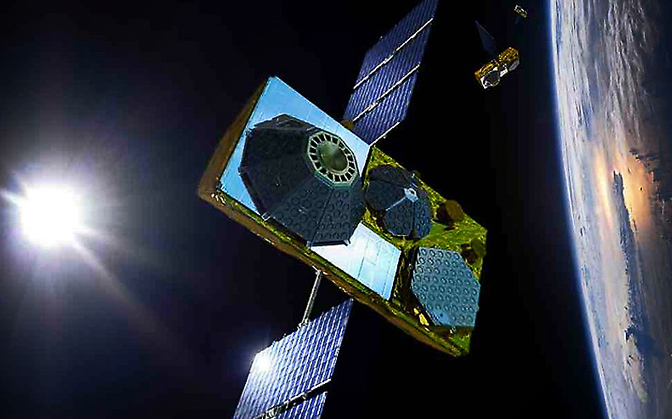FCC OK's Broadband Network in 2.4 GHz Band

WASHINGTON—Globalstar has been cleared to create a terrestrial broadband network in its 2.4. GHz spectrum holdings. The Federal Communications Commission modified its Ancillary Terrestrial Component (ATC) rule for Globalstar in a December Report & Order, clearing the way for it to launch a low-power terrestrial network at 2.4835 to 2.495 GHz.
No Broadcast Auxiliary Spectrum operations will have to move, according to the Order: “The Order concludes that no new rules are necessary to protect BAS systems at this time. It declines to require Globalstar to notify its customers located in markets where grandfathered TV BAS Channel A10 TV Pickup stations are located that the low-power ATC network may be subject to temporary interruption in the event of TV BAS operations. Furthermore, it finds that relocation of BAS stations is not necessary to protect such stations from the operations of Globalstar’s low-power terrestrial network.”
The Order was published in the Federal RegisterJan. 31, triggering a March 2 effective date (excepting Sec. 25.149 information collection requirements that must approved by the Office of Management and Budget.)
“The Order modifies the gating criteria and other ATC rules to permit expanded terrestrial use of the 2,483.5-2,495 MHz frequency band and establishes a framework that will enable Globalstar, the sole MSS [mobile satellite-service] licensee at 2,483.5-2,495 MHz, to apply for a license to deploy a low-power terrestrial network in the band,” the FR synopsis said.
The Order does not address further requests from Globalstar to deploy high-power terrestrial services in the S-band at 2,483.5-2,495 MHz, and the L-band at 1,610-1,617.775 MHz, and low-power terrestrial networks at 2,473-2,483.5 MHz.
Globalstar first asked for the ATC modification in 2012, including adjacent unlicensed spectrum. It scaled back the request to the 2483.5-2495 MHz band last November. ATC rules, adopted in 2003, make way for terrestrial networks over satellite spectrum.
Globalstar’s ATC modification involved “gating criteria” set forth in Sec. 25.149 of the commission’s ATC rules, which must be met by MSS operators in order to offer ATC. Operators “must demonstrate the provision of ‘substantial satellite service’ in the MSS—that is, the capability of providing continuous satellite service over the entire geographic area... and must also provide ATC service and MSS on an integrated basis,” according to the FR item.
The modification eliminates the coverage area requirement and “relaxes” the integrated service rule, “only to low-power ATC in the 2483.5-2495 MHz band and [does] not set a precedent for deployment of high-power ATC systems,” the FR stated.
“Total transmit power is not to exceed 1 watt with a peak equivalent isotropically radiated power of no more than 6 dBW (4 watts) with a minimum 6 dB bandwidth of 500 kilohertz and a maximum conducted power spectral density limit of 8 dBm/3 kHz,” it further stated.
In an unrelated matter that also may have implications for BAS operations, a petition filed with the FCC by the Fixed Wireless Communications Coalition is asking to end full-band, full-arc frequency coordination for fixed satellite service (FSS) stations, which protects FSS downlinks on all frequencies and precludes use by others sharing the spectrum. This also applies to 7 and 13 GHz BAS operations, which are shared with MSS feeder links.
Engineers for the Integrity of Broadcast Auxiliary Services Spectrum support the petition on the grounds that “full-band, full-arc licensing and frequency coordination, represents an inefficient use of spectrum that constitutes a de facto policy of spectrum warehousing,” EIBASS said in comments filed on the petition docket.
However, the National Association of Broadcasters opposes the petition on the grounds that “Hundreds of broadcast television stations rely on Fixed Satellite Service (FSS) earth stations to receive network and other syndicated programming that these stations then transmit to viewers. In addition, transportable FSS uplink and downlink systems are used for thousands of broadcast events broadcast each year.”
Also see...
Dec. 14, 2016
“Microwave Group Seeks Access to Reserved but Unused Spectrum,” at CommLawBlog.
Jan. 6, 2017
“Globalstar positions its 2.4 GHz as prime for LTE small cells,” from FierceWireless.
The professional video industry's #1 source for news, trends and product and tech information. Sign up below.
